Related Research Articles

Elizabeth "Lee" Miller, Lady Penrose, was an American photographer and photojournalist. Miller was a fashion model in New York City in the 1920s before going to Paris, becoming a fashion and fine art photographer there. During World War II, she was a war correspondent for Vogue, covering events such as the London Blitz, the liberation of Paris, and the concentration camps at Buchenwald and Dachau. Her reputation as an artist in her own right is due mostly to the fact her son discovered and promoted her work as a fashion and war photographer.
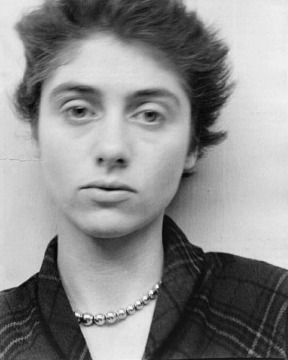
Diane Arbus was an American photographer. She photographed a wide range of subjects including strippers, carnival performers, nudists, people with dwarfism, children, mothers, couples, elderly people, and middle-class families. She photographed her subjects in familiar settings: their homes, on the street, in the workplace, in the park. "She is noted for expanding notions of acceptable subject matter and violates canons of the appropriate distance between photographer and subject. By befriending, not objectifying her subjects, she was able to capture in her work a rare psychological intensity." In his 2003 New York Times Magazine article, "Arbus Reconsidered", Arthur Lubow states, "She was fascinated by people who were visibly creating their own identities—cross-dressers, nudists, sideshow performers, tattooed men, the nouveaux riches, the movie-star fans—and by those who were trapped in a uniform that no longer provided any security or comfort." Michael Kimmelman writes in his review of the exhibition Diane Arbus Revelations, that her work "transformed the art of photography ". Arbus's imagery helped to normalize marginalized groups and highlight the importance of proper representation of all people.

Paul Strand was an American photographer and filmmaker who, along with fellow modernist photographers like Alfred Stieglitz and Edward Weston, helped establish photography as an art form in the 20th century. In 1936, he helped found the Photo League, a cooperative of photographers who banded together around a range of common social and creative causes. His diverse body of work, spanning six decades, covers numerous genres and subjects throughout the Americas, Europe, and Africa.
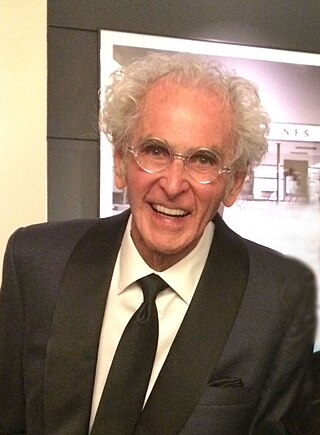
Jerry Norman Uelsmann was an American photographer.
Lee Friedlander is an American photographer and artist. In the 1960s and 1970s, Friedlander evolved an influential and often imitated visual language of urban "social landscape," with many of his photographs including fragments of store-front reflections, structures framed by fences, posters and street signs. His work is characterized by its innovative use of framing and reflection, often using the natural environment or architectural elements to frame his subjects. Over the course of his career, Friedlander has been the recipient of numerous awards and his work has been exhibited in major museums and galleries worldwide.

Arno Rafael Minkkinen is a Finnish-American photographer who works in the United States.

Francesca Stern Woodman was an American photographer best known for her black and white pictures featuring either herself or female models.
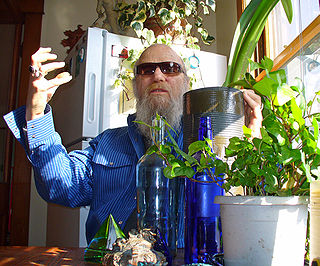
William George Linich, known professionally as Billy Name, was an American photographer, filmmaker, and lighting designer. He was the archivist of The Factory from 1964 to 1970. His brief romance and subsequent friendship with Andy Warhol led to substantial collaboration on Warhol's work, including his films, paintings, and sculptures. Linich became Billy Name among the clique known as the Warhol superstars. He was responsible for "silverizing" Warhol's New York studio, the Factory, where he lived until 1970. His photographs of the scene at the Factory and of Warhol are important documents of the pop art era.
Mary Anna McCartney is a British photographer, documentary filmmaker, plant-based and vegetarian cookbook author, and Global Ambassador for Meat Free Monday. McCartney is a daughter of musician Paul McCartney and photographer Linda McCartney, and is the sister of fashion designer Stella McCartney.
Milton RogovinPronounced "ruh-GO-vin" was an American social documentary photographer. His photographs are in the Library of Congress, the J. Paul Getty Museum, and the Center for Creative Photography.
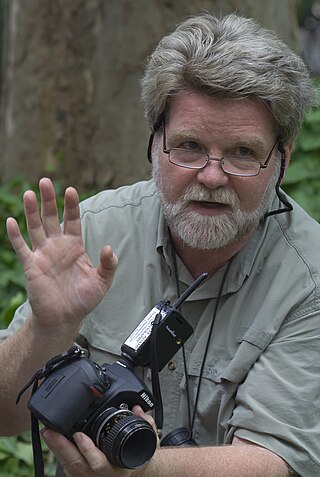
Shelby Lee Adams is an American environmental portrait photographer and artist best known for his images of Appalachian family life.
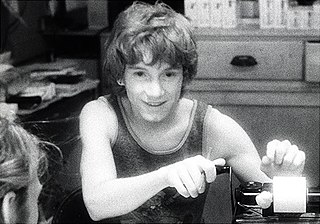
Daniel Nicoletta is an Italian-American photographer, photojournalist and gay rights activist.

James Balog is an American photographer whose work explores the relationship between humans and nature. He is the founder and director of Earth Vision Institute in Boulder, Colorado.

Janette Beckman is a British documentary photographer who has worked in London, New York and Los Angeles. Beckman describes herself as a documentary photographer. While she produces a lot of work on location, she is also a studio portrait photographer. Her work has appeared on records for the major labels, and in magazines including Esquire,Rolling Stone,Glamour,Italian Vogue,The Times,Newsweek,Jalouse,Mojo and others.
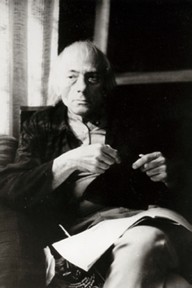
Louis Faurer was an American candid or street photographer. He was a quiet artist who never achieved the broad public recognition that his best-known contemporaries did; however, the significance and caliber of his work were lauded by insiders, among them Robert Frank, William Eggleston, and Edward Steichen, who included his work in the Museum of Modern Art exhibitions In and Out of Focus (1948) and The Family of Man (1955).
David Avram "Dave" Isay is an American radio producer and founder of Sound Portraits Productions. He is also the founder of StoryCorps, an ongoing oral history project. He is the recipient of numerous broadcasting honors, including six Peabody Awards and a MacArthur "Genius" Fellowship. He is the author/editor of numerous books that grew out of his public radio documentary work.

The Sunshine Hotel was a flophouse at 245 Bowery in Manhattan, New York City. It received media attention in the late 1990s and early 2000s as a result of numerous radio and film documentaries about the hotel. In recent decades, the Sunshine Hotel has been reduced in size with parts being converted into restaurant and office space.

Paddy Summerfield was a British photographer who lived and worked in Oxford all his life.
Donald Roger Snyder was an American photographer and multimedia artist. Immersed in the social upheaval of the 1960s, he is best known for his iconic photographs of the counterculture, collected in his 1979 book Aquarian Odyssey: A Photographic Trip into the Sixties.
Richard Sandler is an American street photographer and documentary filmmaker who has made work in New York City. His photographs have been published in The Eyes of the City (2016) and are held in the collections of Brooklyn Museum and the Museum of Fine Arts, Houston. His films include The Gods of Times Square (1999), Brave New York (2004), and Radioactive City (2011). He has received a Guggenheim Fellowship for filmmaking.
References
- ↑ "Notable Alumni". Purchase College, SUNY. Retrieved 11 August 2017.
- ↑ "The Load Vol. V, No. 6" (PDF). SUNY College at Purchase. January 20, 1977. Retrieved 2017-06-14.
- ↑ Robbins, Tom (24 June 2003). "Forgotten Ones". The Village Voice. Retrieved 11 August 2017.
- ↑ Hinke, Christina (August 2005). "Arts". New York Cool. Retrieved 11 August 2017.
- ↑ "Artists". MoMA.org. The Museum of Modern Art, New York. Retrieved 22 November 2017.
- ↑ Dolnick, Sam (29 November 2011). "A World of Change on the Lower East Side". Lens Blog, The New York Times. Retrieved 11 August 2017.
- ↑ O'Brien, Glenn (2003). "1981: New York/New Wave". Artforum International. 41, No. 7 (March).
- ↑ Kiersh, Edward; Photographs by Harvey Wang (1983). Where have you gone, Vince Dimaggio?. New York: Bantam. ISBN 978-0553231311.
- ↑ Johnston, Laurie; Anderson, Susan (18 April 1983). "Yesterdays Heroes". The New York Times. Retrieved 11 August 2017.
- ↑ Balfour, Victoria; Photographs by Harvey Wang (1986). Rock wives: the hard lives and good times of the wives, girlfriends, and groupies of rock and roll (1st Beech Tree Books/ Quill ed.). New York: Beech Tree Books. ISBN 978-0688069667.
- ↑ Wang, Harvey; Foreword by Pete Hamill (1990). Harvey Wang's New York (1st ed.). New York: W.W. Norton. ISBN 978-0393029147.
- ↑ Goodstein, Laurie (2 February 1992). "Faces of New York's Dying Breeds". The Washington Post. Retrieved 11 August 2017.
- ↑ Isay, David; Wang, Harvey; Foreword by Henry Roth (1996). Holding On (1st ed.). New York: W.W. Norton. ISBN 978-0393037548.
- ↑ Cass, Connie (14 September 1995). "Smithsonian Portrays the Elderly at Work : Art: Harvey Wang's studies of people laboring in disappearing trades inspired the exhibit". Los Angeles Times. Retrieved 11 August 2017.
- ↑ "Going Strong: Older Americans on the Job". Smithsonian. 1995. Retrieved 11 August 2017.
- ↑ "SIA Acc. 06-059, Smithsonian Institution Traveling Exhibition Service, Exhibition Records, c.1963-2005". Smithsonian Institution Archives. Retrieved 11 August 2017.
- ↑ Isay, David; Abramson, Stacy; Photographs by Harvey Wang (2000). Flophouse: Life on the Bowery (1st ed.). New York: Random House. ISBN 978-0375503221.
- ↑ Carvajal, Doreen (4 September 2001). "Documenting The Bowery, Or at Least Its Remnants; In Exhibitions and Films, an Unromantic Look at Manhattan Flophouse Life". The New York Times. Retrieved 11 August 2017.
- ↑ "Milton Rogovin: The Forgotten Ones | Tribeca Film Festival". Tribeca Film Festival. Retrieved 11 August 2017.
- ↑ "Milton Rogovin, Social Documentary Photographer - Lower West Side Quartets, 2000-2002, Buffalo, NY". www.miltonrogovin.com. Retrieved 11 August 2017.
- ↑ Isay, Dave; Miller, David; Wang, Harvey (2003). Milton Rogovin: The forgotten ones (1st ed.). New York: Quantuck Lane Press. ISBN 978-0971454859.
- ↑ "Pathways from Darkroom to Digital". The New Yorker. 13 June 2015. Retrieved 11 August 2017.
- ↑ "Screening: From Darkroom to Daylight". School of Visual Arts. 8 April 2016. Retrieved 11 August 2017.
- ↑ Ball, Scott (4 October 2015). "Inside the Darkroom with Harvey Wang". The Rivard Report.
- ↑ "Documentary explores shift from film to digital photography". Cincinnati.com. 20 November 2014. Retrieved 11 August 2017.
- ↑ Kauffman, Stanley (17 February 2010). "Several Worlds". New Republic. Retrieved 11 August 2017.
- ↑ Holden, Stephen (18 February 2010). "In an Ever-Changing New York, Falling in Love May Be the Only Constant". The New York Times. Retrieved 11 August 2017.
- ↑ "Big Apple Film Festival (2007)". IMDB. 17 November 2007. Retrieved 11 August 2017.
- ↑ "The Last New Yorker". IMDb. Retrieved 11 August 2017.
- ↑ Reardon, Eileen (10 February 2006). "'The rich have their own photographers; I photograph the poor the forgotten ones' Milton Rogovin". People's World. Retrieved 11 August 2017.
- ↑ "Rhode Island International Film Festival (2004)". IMDb. Retrieved 11 August 2017.
- ↑ "Henley Royal Regatta by Harvey Wang - Rowing video | row2k.com". row2k. Retrieved 11 August 2017.
- ↑ "Awards - Milton Rogovin: The Forgotten Ones". www.miltonrogovin.com. Retrieved 11 August 2017.
- ↑ "Archives: Past Winners. 41st Annual Awards" (PDF). NY Emmys. Retrieved 11 August 2017.
- ↑ "Archives: Nominees. 40th Annual Awards" (PDF). NY Emmys. Retrieved 11 August 2017.
- ↑ "Archives: Nominees. 40th Annual Awards" (PDF). NY Emmys.